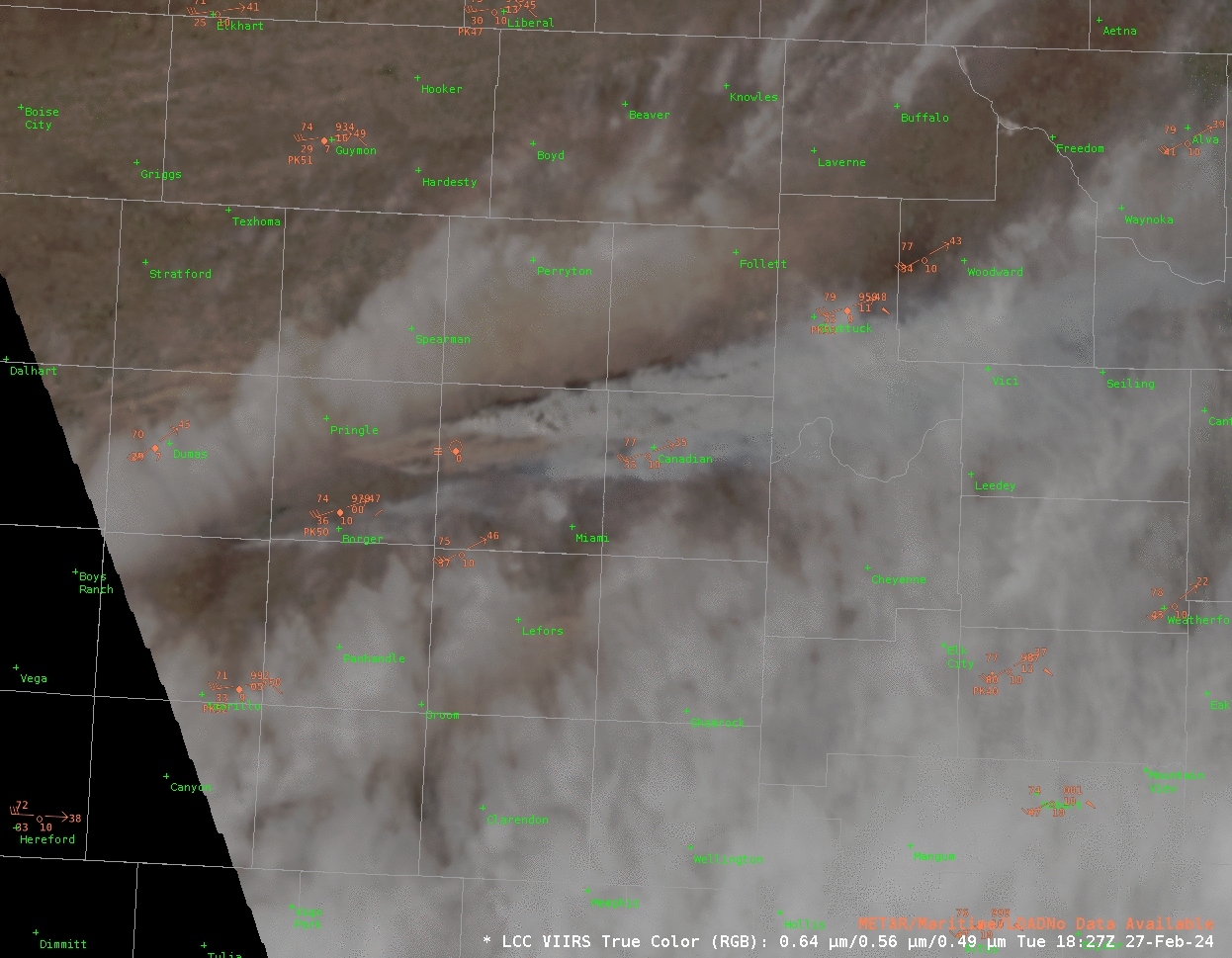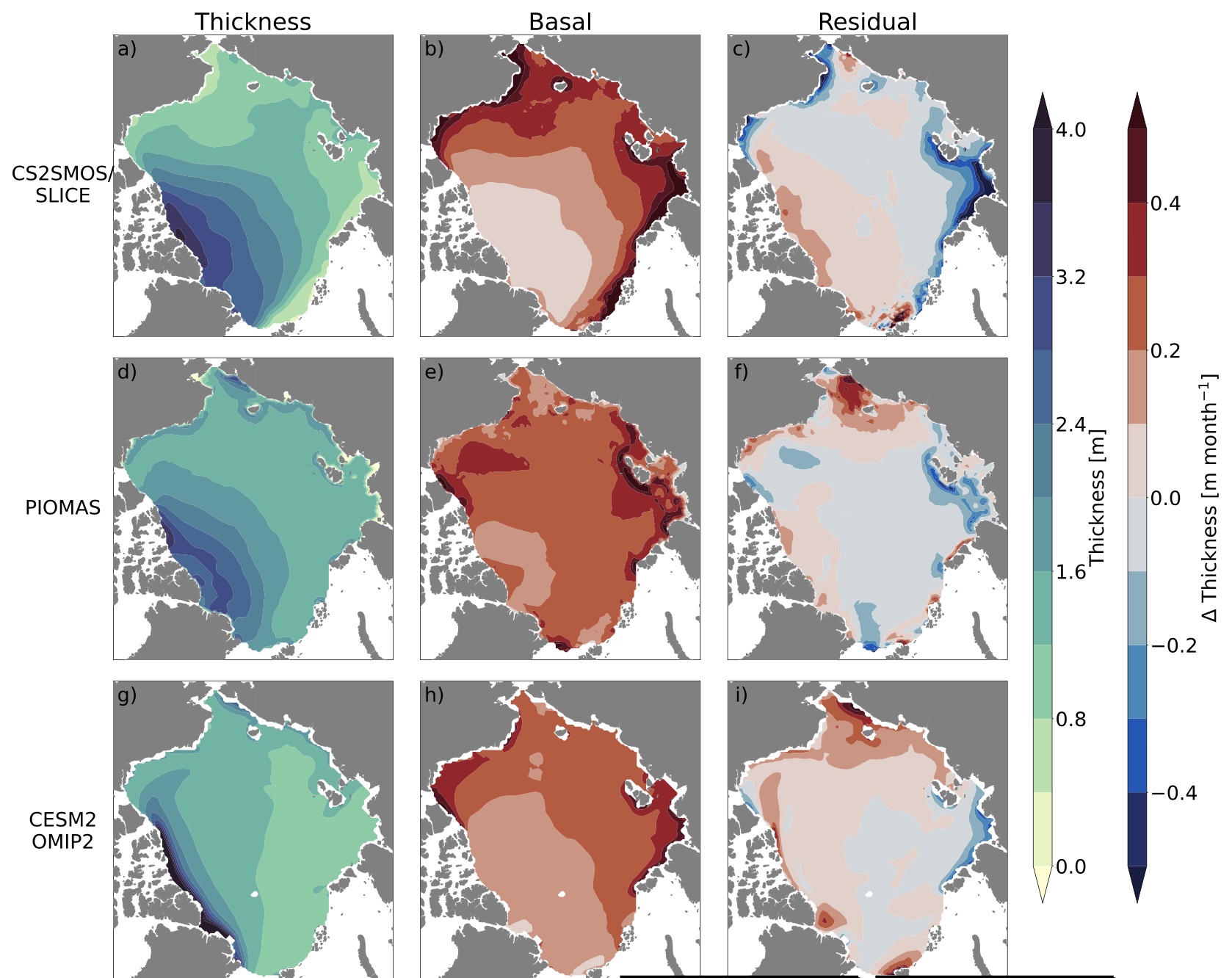
[ Archive ]

 |
CIMSS-NOAA Weekly Report [ Archive ] |
 |
CIMSS-NOAA WEEKLY HIGHLIGHTS FOR THE WEEK ENDING MARCH 2, 2024
DATA, INFORMATION, AND USE-INSPIRED SCIENCE:
FUTURE OUTLOOK:
AWARDS AND RECOGNITION:
TRAVEL AND MEETINGS:
WMO Advisory Group for the Global Cryosphere Watch Meeting in Anchorage: The National Weather Service (NWS) Alaska Region hosted a group of over 20 cryosphere experts from around the globe February 26-29 in Anchorage, Alaska, for a gathering of the World Meteorological Organization (WMO) Advisory Group on the Global Cryosphere Watch (AG-GCW). NWS AK Region Director Dr. Scott Lindsey is the Chair of AG-GCCW. NESDIS/STAR participants included Jeff Key and Ludo Brucker. Other NWS participants included Susan West (NWS International Affairs) and Becki Heim (NWS Alaska Region). The Advisory Group provides global coordination on WMO requirements for in situ and satellite observations of the cryosphere, and on data management, data utilization, and applications. Throughout the week, the group focused on developing recommendations for cryosphere data policy and observing requirements including space-based observations, discussed access to cryosphere data, and heard proposals for WMO Integrated Processing and Prediction Systems (WIPPS) pilot projects focused on hydrology, cryosphere hazards, ice sheet surface mass balance, and sea ice thickness. J. Key is the lead of the GCW Cryosphere Observing Requirements team (CRYORA), which spent the first day addressing remaining issues in their recently drafted Statement of Guidance for Cryosphere Applications. (J. Key, E/RA2, 608-263-2605, jeff.key@noaa.gov)
 (Click image to enlarge)
(Click image to enlarge)
Figure: AG-GCW group photo (left) in Anchorage, AK (right).
TRAINING AND EDUCATION:
Satellite Book Club presentation on NUCAPS and gridded NUCAPS fields: Scott Lindstrom from the Cooperative Institute for Meteorological Satellite Studies (CIMSS) gave a Total Operational Weather Readiness-Satellites (TOWR-S) Satellite Book Club presentation on NUCAPS and gridded NUCAPS fields. The presentation was recorded and is available on YouTube: https://www.youtube.com/watch?v=LeK_LOEBaLo. Scott's talk focused mostly on non-convective events, and described ways to display and interpret the fields in relation to cool season events. The talk was followed by about 15 minutes of discussion. (S. Lindstrom, CIMSS, 608 263 4425)
MEDIA INTERACTIONS AND REQUESTS:
SOCIAL MEDIA AND BLOG Posts:
SSEC and CIMSS Scientists in the news: Scientists at the University of Wisconsin-Madison (UW) Space Science and Engineering Center (SSEC) and the Cooperative Institute for Meteorological Satellite Studies (CIMSS) provide expert interviews, imagery and case studies to promote science and satellite imagery. This week: 1) CIMSS Satellite Blog contributors Scott Bachmeier and Scott Lindstrom published the following case studies: "Not quite so wet in the south Pacific" (February 28); "Smokehouse Creek fire in north Texas" (February 22); "CIMSS and JPSS at AMS in 2024: Part I" (February 28); "CIMSS and JPSS and AMS in 2024: Part II" (February 27); "Wind-driven grass fires in Nebraska" (Februrary 26); "Model estimates of information available from the GXS" (February 26). Read more at the CIMSS Satellite Blog: https://cimss.ssec.wisc.edu/satellite-blog/. (S. Lindstrom, CIMSS, 608-263-4425; S. Bachmeier, CIMSS; M. Gunshor, CIMSS, 608-263-1146; E. Verbeten, SSEC, 608-263-4206.
 (Click image to enlarge)
(Click image to enlarge)
Figure: The Smokehouse Creek fire as of 29 February is the largest fire in Texas history. VIIRS True-Color imagery above shows an extensive smoke plume over the eastern part of the north Texas Panhandle between 1830 and 2015 UTC on 27 February. Surface observations show very strong gusts from the west. In addition, a wind shift/cold front is moving southward into the domain by 2015 UTC, denoted by a line of cumulus cloud, with strong northerly winds behind it.
PUBLICATIONS:
Paper published on process based evaluation of Arctic sea ice growth: A paper titled "Model Mean State Sea Ice Thickness Reflects Dynamic Effect Biases: A Process Based Evaluation", by James Anheuser (formerly CIMSS), Yinghui Liu (STAR), and Jeff Key (STAR), was published in Geophysical Research Letters. Sea ice models include two types of processes: those causing phase change, called thermodynamic processes, and those causing thickness changes through relative motion of ice parcels, called dynamic processes. This paper compares the effects of these processes in two models to observational estimates to aid the interpretation of ice thickness in these models and drive development. The study found that the biases in the dynamic effects drive biases in mean thickness and thermodynamic processes, which could in turn be reduced if dynamic components biases were to be improved. Citation: Anheuser, J., Liu, Y., & Key, J. (2024). Model mean state sea ice thickness reflects dynamic effect biases: A process based evaluation. Geophysical Research Letters, 51, e2023GL106963. http://dx.doi.org/10.1029/2023GL106963. (Y. Liu, E/RA2, 608-890-1893, yinghui.liu@noaa.gov; J. Key, E/RA2, 608-263-2605)
 (Click image to enlarge)
(Click image to enlarge)
Figure: Monthly mean overall thickness, basal growth and residual thickness changes from November to March beginning with November 2010 and ending with December 2018 (excluding November 2011–March 2012) for CS2SMOS/SLICE (a–c) and two models: PIOMAS (d-f) and CESM2‐OMIP2 (g–i).
OTHER:
| Archived Weeklies Page | Submit a report item |